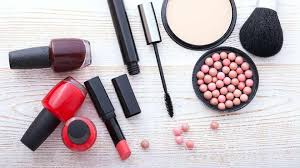Chinese cosmetics are popular in South Korea.
In the context of the “big retreat” and “stall” of Korean cosmetics, the country’s authoritative media released “very encouraging” news – Chinese cosmetics are popular in South Korea and are counterattacking!
On December 24, according to CCTV-2’s “World Finance” column, from January to August 2023, China’s cosmetics exports to South Korea increased by an astonishing 190% year-on-year. According to the news, Chinese cosmetics have recently succeeded in the Korean market.
According to statistics from the Korean Customs Service (Customs) on the import data of seven major categories of Chinese cosmetics, including skin care products, total imports in the third quarter of 2023 increased by 5.8% compared to last year.
News interpretation believes behind this growth trend is the widespread recognition and acceptance of Chinese cosmetics brands in the Korean market. More and more Korean consumers are beginning to pay attention to and purchase cosmetics from Chinese brands, expressing high recognition of the quality and cost-effectiveness of Chinese products.
According to news reports, South Korean consumers will spend less on cosmetics in 2023 due to rising prices and shrinking consumer confidence. Consumers prefer to buy mid-to-low-cost cosmetics with high-cost performance than high-end cosmetics. Affected by this, the operating profits of two well-known large cosmetics companies in South Korea dropped by more than 10% and 30% year-on-year in the third quarter.
In the context of “consumption downgrade,” Chinese cosmetics have captured Korean consumers in one fell swoop through their excellent “cost-effectiveness” advantage. In addition, the rise of China’s cross-border e-commerce platform has also facilitated the entry of mid to low-price cosmetics into the Korean market. Those high-end brands that consumers once flocked to have now been replaced by mid to low-priced cosmetics in the wave of cost-effectiveness. Today, Korean consumers prefer to buy mid-to-low-priced Chinese cosmetics with high cost-effectiveness, including basic skin care products and lipsticks. , eye shadow, powder, facial mask, etc.
In the past few years, Korean makeup (Korean makeup) relied on the “Korean Wave” to conquer and expand in China, making a lot of money. With the rise of Chinese makeup, it has begun to launch a “counterattack” (going overseas) on the Korean market with affordable prices and innovative marketing models and quickly occupied a place.
Surfactant is a substance with a very unique chemical framework. It is an auxiliary basic material in aesthetic resources. It is used in facial cleansers, moisturizing lotions, skin creams, shampoos, conditioners, toothpaste, and other products. Its functions in cosmetics are diverse, and its main functions are emulsification, washing, foaming, solubilization, sterilization, anti-static, dispersion, etc.

Emulsifiers in cosmetics: the role of surfactants
Emulsification
As we all know, skincare products, the most commonly used creams and lotions, contain oily ingredients and a large amount of water. They are a mixture of these two substances. But why can’t we see the oil droplets inside with the naked eye? And you can’t see the water seeping out? This is because they have formed a uniformly mixed diffusion system; the oily active ingredients are evenly distributed in the water in the form of little beads, or the water is uniformly spread in the oily components in the form of small droplets. The previous is called “Oil in water,” and the latter is called “water in oil.” This is called “emulsion cosmetics,” the most usual.
However, under regular scenarios, oil and water are immiscible. The oily ingredients and water in emulsion products such as creams and lotions can form a uniformly mixed dispersion system because surfactants are added. The special structure of surfactants can evenly mix oil and water, which are immiscible with each other, and form a relatively stable dispersion system, an emulsion. The role played by surfactants in emulsions is called “emulsification,” and the surfactants that play the role of emulsification are called “emulsifiers.” Surfactants are found in the creams and lotions we use every day.
Washing and foaming effects
Some surfactants have good washing and foaming effects. The soaps we are familiar with are a very commonly used type of surfactant. Toilet and bar soap use soap ingredients to perform cleaning and foaming functions. Some facial cleansers also use soap ingredients to cleanse. However, soap ingredients have strong cleaning power and irritation and can easily cause skin degreasing. Therefore, people with dry skin and sensitive skin should not use this type of cleansing product. In addition, surfactants also play a cleaning and foaming role in products such as bath soap, shampoo, hand soap, and toothpaste.
Solubilization
Surfactants can increase the solubility of some insoluble or poorly soluble substances in water so that they can be completely dissolved and eventually form a transparent state. This effect is called “solubilization”. Surfactants that play a solubilizing role are also called “solubilizing agents.” For example, if you want to add an oily ingredient with good emollient properties to a transparent lotion, you can use the solubilizing effect of surfactants to make the oily ingredient dissolve well in the lotion, giving the product a good transparent appearance. However, it should be noted that the amount of oily components dissolved through solubilization is limited, and it is difficult for a larger amount of oily components to be completely dissolved in water through solubilization. As the oil content increases, the amount of surfactant also needs to increase. Some lotions are opaque and milky white because they contain more oil and are emulsified with water by surfactants.
Surfactants Supplier
Synthetic Chemical Technology Co. Ltd., is an established global chemical material manufacturer and supplier with over 12 years’ experience in the production of high-quality nanomaterials.
We provide many kinds of surfactants and nickel-based superalloy powders, such as Inconel 718, Inconel 625, CoCrMo, CoCrW and other cobalt alloy powders, Ti6Al4V and other titanium alloy powders, AlSi10Mg, AlSi7Mg and other aluminium alloy powders, SS316L, H13, 18Ni300 and other ferroalloy powders, stainless steel powder, CuSn10, etc. 3D printing powder. Contact us via message or select the desired items to send us an inquiry.( sales5@nanotrun.com)
